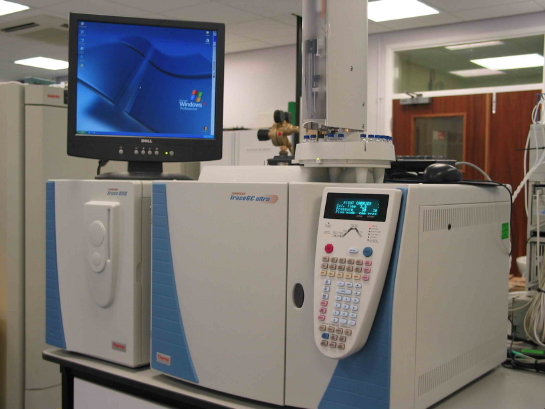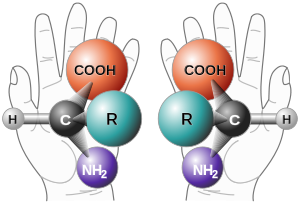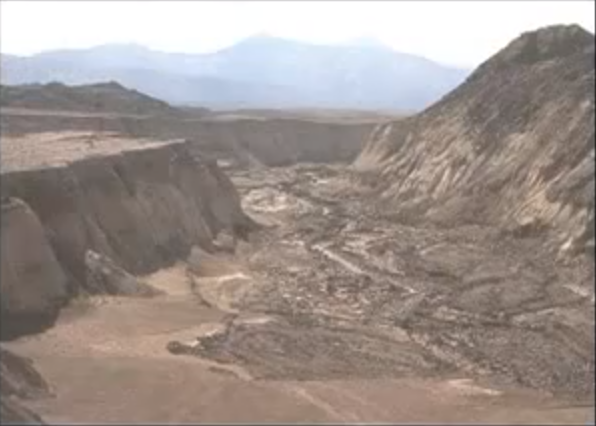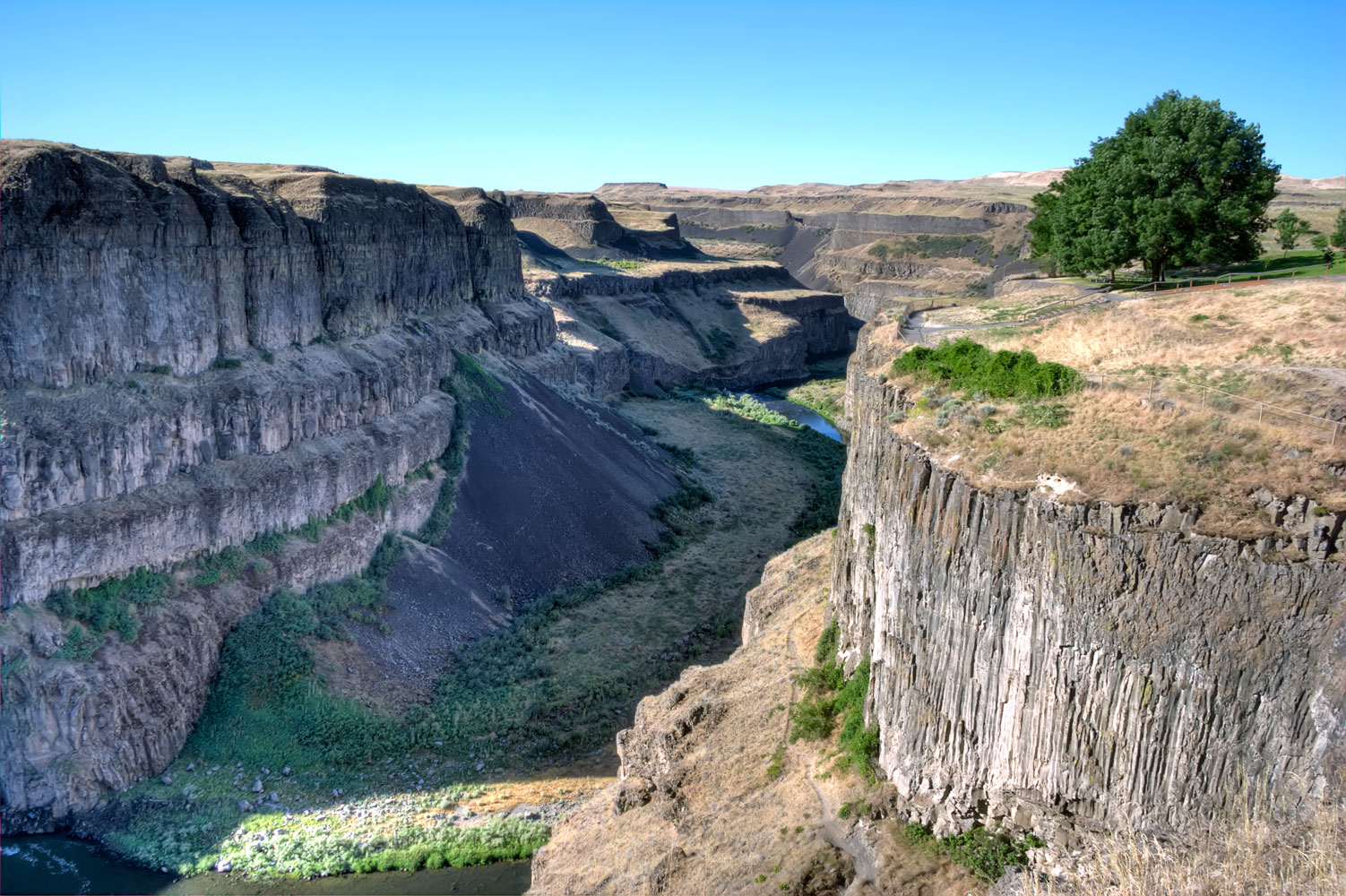RSR's 2013 List of Not So Old Things Pt 3
This is the show from Friday February 1st, 2013
SUMMARY:
* Dinosaur Soft Tissue, Adam & Eve in DNA, Too Perfect Galaxy Clusters, C-14 Everywhere: Real Science Radio co-hosts Bob Enyart and Fred Williams observe their annual tradition by updating their growing list of scientific observations that challenge those who claim that the earth is millions of years old. Many of these scientific finds demand a re-evaluation of supposed billion-year ages. (See also Part 1 of our list.)

* Carbon-14 Found Everywhere It's Not Supposed To Be: Carbon-14 C14 decays in only thousands of years and therefore cannot last for millions. Thus evolutionists did not expect to find C-14 EVERYWHERE it shouldn't be if the earth were old (Answers 2011). Carbon-14 is found in petrified wood, coal, oil, limestone, graphite, natural gas, marble, deep ground water, dinosaur fossils, and even in supposedly billion-year-old diamonds! A secondary assumption by old-earth scientists proposes that the C-14 in diamonds (coal, etc.) must have come from C-13 and neutron capture. However, first, radio activity is concentrated in continental rock (see RSR Prediction below), and secondly, relatively speaking, radioactivity is relatively scare even in the continental crust, at least as documented by this U.S.G.S. report for enormous swatches of land. Thirdly, a geologist with a degree from Colorado's School of Mines who has a background in nuclear physics (who also spent years bombarding various elements with neutrons to make isotopes for industry), explained to RSR that Carbon does not easily absorb neutrons because it is the heavier elements beginning with Sodium that readily capture neutrons. Further, while it is possible but extremely unlikely that a Carbon atom will capture a free neutron, industrial processes use Carbon to slow down neutrons, whereas they use heavier elements, typically starting with Silicon, which is almost double the atomic weight of Carbon, for neutron capture. Consider also, as Dr. Paul Giem writes, that "since nitrogen-14 captures neutrons 110,000 times more easily than does carbon-13," samples with even tiny amounts of nitrogen would dramatically increase carbon dates, such that, "If neutron capture is a significant source of carbon-14 in a given sample, radiocarbon dates should vary wildly with the nitrogen content of the sample." Giem adds, "I know of no such data." And recognizing that U.S.G.S report of scarce crustal radioactivity for coal, basalt, shales, granite, fly ash, etc., Dr. Jonathan Sarfati builds upon Dr. Giem's research arguing that neutron capture could account for less than one 10,000th of the C-14 in diamonds (see these peer-reviewed calculations). See more at RealScienceRadio.com/Carbon-14.
* Wet Sand Hardens into Stone in Hours: According to scientists at Murdoch University, experiments prove that rocks don't need eons to harden but by spraying water containing soil bacteria onto "soft sand," in a couple hours they end up with "something resembling marble more than sandstone." See RSF's Oops show; Science Alert and Creation magazine's Speedy Stone article. Help RSR add two more methods of rapidly turning soft material into hard rock by emailing us sources to document the following:
- vibration, forcing the water out of mud and causing the grains to settle into an extremely rock-hard material
- plain water, sprayed on soft limestone (as miners do in Australia) to turn it into hard rock.
* Even Faster Rocks: As listed in Dec, 2010 Creation Matters, radiometric dating by Rubidium-Strontium gives a 1.3 billion year age for lava atop the Grand Canyon which would be 300 million years older than the precambrian basalt at the bottom of the canyon, as reported by Steven Austin, Ph.D. Also, the Potassium-Argon dating method incorrectly indicates that certain minerals hardened into stone 350,000 years ago, when in reality they solidified just recently, in 1986, from lava that flowed six years after the enormous 1980 Mount St. Helens eruption. And some of the mineral within the then ten-year old rock was wrongly dated as having solidified two million years earlier.

* Grand Canyon's Millions of Missing Years: According to evolutionary geologists, there are MORE THAN 100 MILLION YEARS MISSING in the extraordinarily regular and straight layers of the Grand Canyon. The supposed geological layers entirely missing from the beautifully formed Grand Canyon strata, according to the National Park Service, include the Ordovician and the Silurian. The flat boundaries between strata provide hard evidence proving that millions of years of erosion DID NOT OCCUR, and that therefore, those millions of years DID NOT PASS, neither in the canyon nor anywhere on Earth. Also, the enormous side canyons, many of which would be major tourist attractions if they had formed elsewhere on Earth, have no river, Colorado or otherwise, to explain their existence, for they were formed by the rapid drainage of groundwater in the weeks after the flood catastrophically formed after the breach of a natural dam. The Grand Canyon formed rapidly.
* Death Valley Volcano Erupts AFTER Formation of Earth: According to the USGS, "The understanding of the timing of eruptions [in Death Valley] and the timing of the building up to eruptions is changing." Anti-biblical bias frequently leads scientists to a knee-jerk claim of events occurring tens of thousands or millions of years ago, which if true would falsify the Bible account of the creation week and the literal interpretation of Genesis presented by Jesus Christ Himself. According to USA Today, in this particular instance, the old claim that a Death Valley eruption occurred 10,000 years ago, which as Isaac Newton himself would have pointed out, would awkwardly have been prior to God's creation of the universe, actually occurred only 800 years ago, according to more careful scientific observations, as per the trend evident on this list-of-not-so-old-things!
According to the USGS, "The understanding of the timing of eruptions [in Death Valley] and the timing of the building up to eruptions is changing." Anti-biblical bias frequently leads scientists to a knee-jerk claim of events occurring tens of thousands or millions of years ago, which if true would falsify the Bible account of the creation week and the literal interpretation of Genesis presented by Jesus Christ Himself. According to USA Today, in this particular instance, the old claim that a Death Valley eruption occurred 10,000 years ago, which as Isaac Newton himself would have pointed out, would awkwardly have been prior to God's creation of the universe, actually occurred only 800 years ago, according to more careful scientific observations, as per the trend evident on this list-of-not-so-old-things!

* Initial Tests Show Mostly Left-Handed Amino Acids in Amber, Shale, and Chert! Like hands and hockey sticks, some molecules are right or left handed. Life uses 100% left-handed amino acids to build proteins (and purely right-handed sugars to build DNA). The laws of chemistry demonstrate that after death, amino acids racemize back to a 50-50 mixture of right- and left-handed acids. England's Royal Society published a time range for this physical process which, "produces totally racemized amino acids in 10(5)-10(6) [100,000 to 1,000,000] years in most environments on the Earth." (So researchers have even begun dating whale carcasses by the spherical growth patterns in the eye by measuring the percent of left-handed acids in each lens layer.) Yet allegedly far older insects in amber yield mostly left-handed amino acids such that researchers shockingly suggest a half-life of a billion years for racemization in amber! However, while almost all of the research on this soft-tissue webpage is reported from secular sources, in this case creationist scientists have reported primarily left-handed amino acids in Wyoming oil shale (in the Green River region) and also in the supposedly [url=http://www.scribd.com/doc/90911770/Molecular-Population-Genetics-and-Evolution-Masatoshi-Nei#outer_page_20]three-billion year old Fig Tree Chert (flint-like sedimentary rock that can contain small fossils) in South Africa. So just as scientists have begun reporting on the [url=http://KGOV.com/dinosaur-soft-tissue#carbon-dating]carbon dating of dinosaur soft tissue, and as they've found [url=http://www.ncbi.nlm.nih.gov/pmc/articles/PMC1692449/?tool=pmcentrez&rendertype=abstract]unracemized amino acids in Pleistocene egg shells and elsewhere, RSR joins with the Royal Academy (although for different reasons) in [url=http://www.ncbi.nlm.nih.gov/pmc/articles/PMC1692449/?tool=pmcentrez&rendertype=abstract]calling for continued biomolecule research on dinosaur fossils including in determining their degree of left handedness. We also call for Carbon 14 dating of some of our "oldest" amber specimens. And finally, while even brief heating can speed the racemization process, nonetheless, RSR predicts much more left-handedness will be found in supposedly ancient dinosaur tissue
[url=http://realscienceradio.com/files/images/science/Engineers-Canyon-1982.jpg]
* Engineer's Canyon: Many people asked to explain the photo on the right might claim that over millions of years that small stream eroded the canyon. In reality, Engineers' Canyon, on the north edge of the Toutle River valley just west of Spirit Lake, eroded in the early 1980s by outflow from the US Army Corps of Engineers' pumping station. Lowering the water level of the lake after the Mount St. Helens eruptions, this deeply incised canyon with many near-vertical walls formed in two days of drainage. So, the stream didn't cause the canyon; the canyon caused the stream (as is also true with the Grand Canyon and the Colorado River).

* The Palouse River Gorge: In the southeast of Washington State, the Palouse River Gorge is one of many features formed rapidly by 500 cubic miles of water catastrophically released with the breaching of a natural dam in the Lake Missoula Flood (which gouged out the Scablands as described above). So, hard rock can be breached and eroded rapidly.
MORE: And from a recent issue of Creation magazine as discussed on RSF:
- Fossil wood from England dated at 25,000 years by carbon-14 embedded in allegedly 183-million year old limestone
- Diamonds from Botswana carbon-14 dated at 55,000 years old mined from rock dated 2 billion years old
- Mount St. Helens rock that should date as solidifying 30 years ago but dating 350,000 to 2.8 million years old
- Mammal hair found in supposedly 100 million year old amber looks surprisingly "similar" to... modern hair
- Geologists say Uganda lava is just thousands of years ago but it's radioactively dated at 773 million years old
* See More: This show is Part 3. So you can also check out our RSR List of Not So Old Things Part I, Part 2, and see our YoungEarth.com!
Today's Resource: Have you browsed through our Science Department in the KGOV Store? Check out especially Walt Brown’s In the Beginning and Bob’s interviews with this great scientist in Walt Brown Week! You’ll also love Dr. Guillermo Gonzalez’ Privileged Planet(clip), and Illustra Media’s Unlocking the Mystery of Life (clip)! You can consider our BEL Science Pack; Bob Enyart’s Age of the Earth Debate; Bob's debate about Junk DNA with famous evolutionist Dr. Eugenie Scott; and the superb kids' radio programming, Jonathan Park: The Adventure Begins! And Bob strongly recommends that you subscribe to CMI’s tremendous Creation magazine and Ken Ham's Answershttp://www.answersingenesis.org/articles/am magazine! (And you can order Darwin's Dilemma DVD by calling BEL at 1-800-8Enyart.)
This is the show from Friday February 1st, 2013
SUMMARY:
* Dinosaur Soft Tissue, Adam & Eve in DNA, Too Perfect Galaxy Clusters, C-14 Everywhere: Real Science Radio co-hosts Bob Enyart and Fred Williams observe their annual tradition by updating their growing list of scientific observations that challenge those who claim that the earth is millions of years old. Many of these scientific finds demand a re-evaluation of supposed billion-year ages. (See also Part 1 of our list.)

* Carbon-14 Found Everywhere It's Not Supposed To Be: Carbon-14 C14 decays in only thousands of years and therefore cannot last for millions. Thus evolutionists did not expect to find C-14 EVERYWHERE it shouldn't be if the earth were old (Answers 2011). Carbon-14 is found in petrified wood, coal, oil, limestone, graphite, natural gas, marble, deep ground water, dinosaur fossils, and even in supposedly billion-year-old diamonds! A secondary assumption by old-earth scientists proposes that the C-14 in diamonds (coal, etc.) must have come from C-13 and neutron capture. However, first, radio activity is concentrated in continental rock (see RSR Prediction below), and secondly, relatively speaking, radioactivity is relatively scare even in the continental crust, at least as documented by this U.S.G.S. report for enormous swatches of land. Thirdly, a geologist with a degree from Colorado's School of Mines who has a background in nuclear physics (who also spent years bombarding various elements with neutrons to make isotopes for industry), explained to RSR that Carbon does not easily absorb neutrons because it is the heavier elements beginning with Sodium that readily capture neutrons. Further, while it is possible but extremely unlikely that a Carbon atom will capture a free neutron, industrial processes use Carbon to slow down neutrons, whereas they use heavier elements, typically starting with Silicon, which is almost double the atomic weight of Carbon, for neutron capture. Consider also, as Dr. Paul Giem writes, that "since nitrogen-14 captures neutrons 110,000 times more easily than does carbon-13," samples with even tiny amounts of nitrogen would dramatically increase carbon dates, such that, "If neutron capture is a significant source of carbon-14 in a given sample, radiocarbon dates should vary wildly with the nitrogen content of the sample." Giem adds, "I know of no such data." And recognizing that U.S.G.S report of scarce crustal radioactivity for coal, basalt, shales, granite, fly ash, etc., Dr. Jonathan Sarfati builds upon Dr. Giem's research arguing that neutron capture could account for less than one 10,000th of the C-14 in diamonds (see these peer-reviewed calculations). See more at RealScienceRadio.com/Carbon-14.
* Wet Sand Hardens into Stone in Hours: According to scientists at Murdoch University, experiments prove that rocks don't need eons to harden but by spraying water containing soil bacteria onto "soft sand," in a couple hours they end up with "something resembling marble more than sandstone." See RSF's Oops show; Science Alert and Creation magazine's Speedy Stone article. Help RSR add two more methods of rapidly turning soft material into hard rock by emailing us sources to document the following:
- vibration, forcing the water out of mud and causing the grains to settle into an extremely rock-hard material
- plain water, sprayed on soft limestone (as miners do in Australia) to turn it into hard rock.
* Even Faster Rocks: As listed in Dec, 2010 Creation Matters, radiometric dating by Rubidium-Strontium gives a 1.3 billion year age for lava atop the Grand Canyon which would be 300 million years older than the precambrian basalt at the bottom of the canyon, as reported by Steven Austin, Ph.D. Also, the Potassium-Argon dating method incorrectly indicates that certain minerals hardened into stone 350,000 years ago, when in reality they solidified just recently, in 1986, from lava that flowed six years after the enormous 1980 Mount St. Helens eruption. And some of the mineral within the then ten-year old rock was wrongly dated as having solidified two million years earlier.

* Grand Canyon's Millions of Missing Years: According to evolutionary geologists, there are MORE THAN 100 MILLION YEARS MISSING in the extraordinarily regular and straight layers of the Grand Canyon. The supposed geological layers entirely missing from the beautifully formed Grand Canyon strata, according to the National Park Service, include the Ordovician and the Silurian. The flat boundaries between strata provide hard evidence proving that millions of years of erosion DID NOT OCCUR, and that therefore, those millions of years DID NOT PASS, neither in the canyon nor anywhere on Earth. Also, the enormous side canyons, many of which would be major tourist attractions if they had formed elsewhere on Earth, have no river, Colorado or otherwise, to explain their existence, for they were formed by the rapid drainage of groundwater in the weeks after the flood catastrophically formed after the breach of a natural dam. The Grand Canyon formed rapidly.
* Death Valley Volcano Erupts AFTER Formation of Earth:
 According to the USGS, "The understanding of the timing of eruptions [in Death Valley] and the timing of the building up to eruptions is changing." Anti-biblical bias frequently leads scientists to a knee-jerk claim of events occurring tens of thousands or millions of years ago, which if true would falsify the Bible account of the creation week and the literal interpretation of Genesis presented by Jesus Christ Himself. According to USA Today, in this particular instance, the old claim that a Death Valley eruption occurred 10,000 years ago, which as Isaac Newton himself would have pointed out, would awkwardly have been prior to God's creation of the universe, actually occurred only 800 years ago, according to more careful scientific observations, as per the trend evident on this list-of-not-so-old-things!
According to the USGS, "The understanding of the timing of eruptions [in Death Valley] and the timing of the building up to eruptions is changing." Anti-biblical bias frequently leads scientists to a knee-jerk claim of events occurring tens of thousands or millions of years ago, which if true would falsify the Bible account of the creation week and the literal interpretation of Genesis presented by Jesus Christ Himself. According to USA Today, in this particular instance, the old claim that a Death Valley eruption occurred 10,000 years ago, which as Isaac Newton himself would have pointed out, would awkwardly have been prior to God's creation of the universe, actually occurred only 800 years ago, according to more careful scientific observations, as per the trend evident on this list-of-not-so-old-things!
* Initial Tests Show Mostly Left-Handed Amino Acids in Amber, Shale, and Chert! Like hands and hockey sticks, some molecules are right or left handed. Life uses 100% left-handed amino acids to build proteins (and purely right-handed sugars to build DNA). The laws of chemistry demonstrate that after death, amino acids racemize back to a 50-50 mixture of right- and left-handed acids. England's Royal Society published a time range for this physical process which, "produces totally racemized amino acids in 10(5)-10(6) [100,000 to 1,000,000] years in most environments on the Earth." (So researchers have even begun dating whale carcasses by the spherical growth patterns in the eye by measuring the percent of left-handed acids in each lens layer.) Yet allegedly far older insects in amber yield mostly left-handed amino acids such that researchers shockingly suggest a half-life of a billion years for racemization in amber! However, while almost all of the research on this soft-tissue webpage is reported from secular sources, in this case creationist scientists have reported primarily left-handed amino acids in Wyoming oil shale (in the Green River region) and also in the supposedly [url=http://www.scribd.com/doc/90911770/Molecular-Population-Genetics-and-Evolution-Masatoshi-Nei#outer_page_20]three-billion year old Fig Tree Chert (flint-like sedimentary rock that can contain small fossils) in South Africa. So just as scientists have begun reporting on the [url=http://KGOV.com/dinosaur-soft-tissue#carbon-dating]carbon dating of dinosaur soft tissue, and as they've found [url=http://www.ncbi.nlm.nih.gov/pmc/articles/PMC1692449/?tool=pmcentrez&rendertype=abstract]unracemized amino acids in Pleistocene egg shells and elsewhere, RSR joins with the Royal Academy (although for different reasons) in [url=http://www.ncbi.nlm.nih.gov/pmc/articles/PMC1692449/?tool=pmcentrez&rendertype=abstract]calling for continued biomolecule research on dinosaur fossils including in determining their degree of left handedness. We also call for Carbon 14 dating of some of our "oldest" amber specimens. And finally, while even brief heating can speed the racemization process, nonetheless, RSR predicts much more left-handedness will be found in supposedly ancient dinosaur tissue
[url=http://realscienceradio.com/files/images/science/Engineers-Canyon-1982.jpg]

* Engineer's Canyon: Many people asked to explain the photo on the right might claim that over millions of years that small stream eroded the canyon. In reality, Engineers' Canyon, on the north edge of the Toutle River valley just west of Spirit Lake, eroded in the early 1980s by outflow from the US Army Corps of Engineers' pumping station. Lowering the water level of the lake after the Mount St. Helens eruptions, this deeply incised canyon with many near-vertical walls formed in two days of drainage. So, the stream didn't cause the canyon; the canyon caused the stream (as is also true with the Grand Canyon and the Colorado River).

* The Palouse River Gorge: In the southeast of Washington State, the Palouse River Gorge is one of many features formed rapidly by 500 cubic miles of water catastrophically released with the breaching of a natural dam in the Lake Missoula Flood (which gouged out the Scablands as described above). So, hard rock can be breached and eroded rapidly.
MORE: And from a recent issue of Creation magazine as discussed on RSF:
- Fossil wood from England dated at 25,000 years by carbon-14 embedded in allegedly 183-million year old limestone
- Diamonds from Botswana carbon-14 dated at 55,000 years old mined from rock dated 2 billion years old
- Mount St. Helens rock that should date as solidifying 30 years ago but dating 350,000 to 2.8 million years old
- Mammal hair found in supposedly 100 million year old amber looks surprisingly "similar" to... modern hair
- Geologists say Uganda lava is just thousands of years ago but it's radioactively dated at 773 million years old
* See More: This show is Part 3. So you can also check out our RSR List of Not So Old Things Part I, Part 2, and see our YoungEarth.com!
Today's Resource: Have you browsed through our Science Department in the KGOV Store? Check out especially Walt Brown’s In the Beginning and Bob’s interviews with this great scientist in Walt Brown Week! You’ll also love Dr. Guillermo Gonzalez’ Privileged Planet(clip), and Illustra Media’s Unlocking the Mystery of Life (clip)! You can consider our BEL Science Pack; Bob Enyart’s Age of the Earth Debate; Bob's debate about Junk DNA with famous evolutionist Dr. Eugenie Scott; and the superb kids' radio programming, Jonathan Park: The Adventure Begins! And Bob strongly recommends that you subscribe to CMI’s tremendous Creation magazine and Ken Ham's Answershttp://www.answersingenesis.org/articles/am magazine! (And you can order Darwin's Dilemma DVD by calling BEL at 1-800-8Enyart.)
